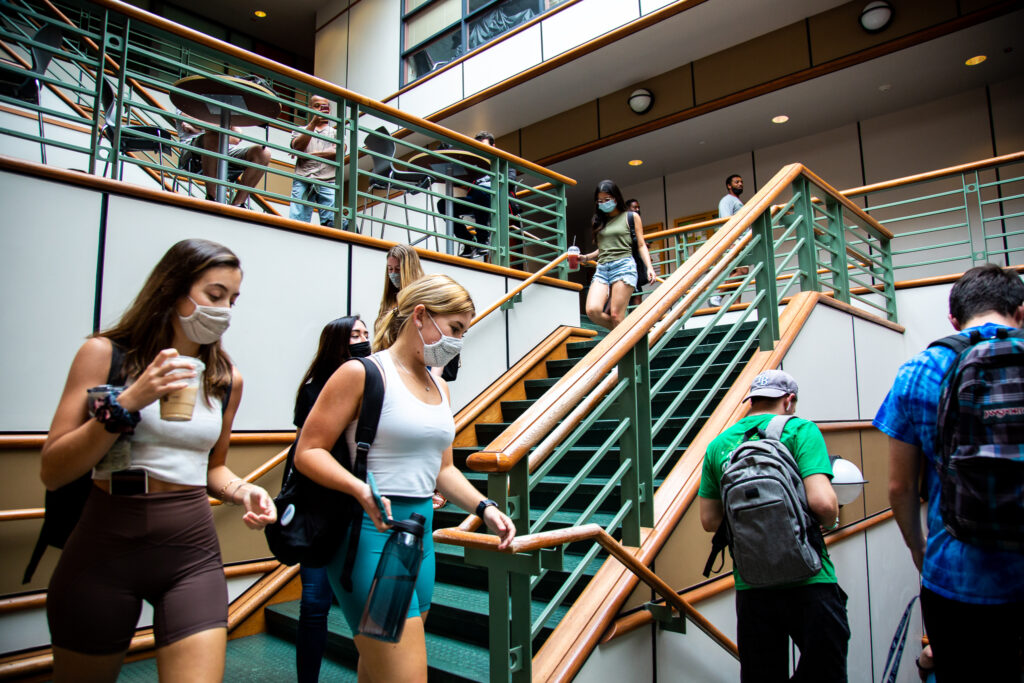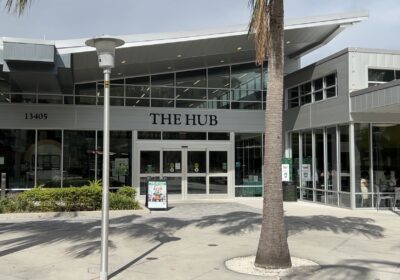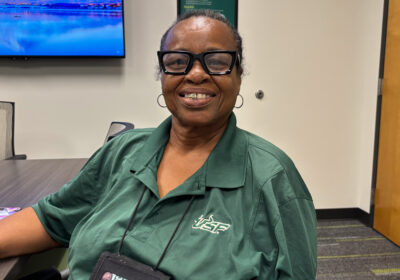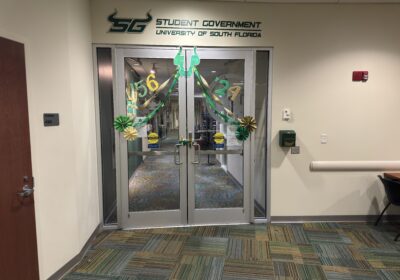Students question temporary shifts to remote learning

“It had to happen sometime — the university is making us go virtual for two weeks,” read an email sent from a professor Aug. 31 announcing the shift to online instructions due to a positive COVID-19 case.
In less than three weeks since the start of the fall semester, what some students hoped to be the “return to normalcy,” with packed classrooms and the return of in-person activities across campus, quickly turned upside down with the news they would be returning to the desktops and virtual classrooms.
The rise of COVID-19 cases across campuses is forcing some in-person classes to shift “temporarily” to online instruction for a two-week period. Students, faculty and staff who test positive or are exposed to the virus are required to be isolated while those with no symptoms skip the quarantine period and the line to get tested.
The news, however, didn’t come as a surprise to junior computer sciences major Ethan Wuitschick.
“I think it will be a somewhat effective short-term solution for handling outbreaks among students, but I think that it’s a token effort given how few masks I see in my courses and the number of high-risk situations on campus outside of classes,” Wuitschick said.
While there have been reports from students across all colleges, Assistant Director of Media Relations Althea Johnson said the university does not have the total number of classes shifted to online instruction to share. The shifts, she said, change on a regular basis based on “reports of positive cases and exposures.”
In an email sent to students whose classes shifted to online instruction, the USF COVID-19 Task Force advised students to monitor their health and symptoms, especially over the two-week period after being notified of the shift, and, if any symptoms are developed, report it to Students Health Services (SHS).
Besides watching out for any early symptoms, the task force recommended the USF community follow all mitigation measures recommended by the Centers for Disease Control and Prevention.
“Because you may have been exposed, you must wear face coverings at all times, practice physical distancing, wash your hands frequently, disinfect surfaces you touch and other than attending classes, do not congregate or gather with other people for the next two weeks,” the email stated.
Face masks are no longer required but “expected” across campus while social distancing inside classrooms isn’t enforced. To some students, the measures have sped up the spread of COVID-19 inside classrooms.
“I never expected it to be this soon, but it’s the price we pay at the fault of those who don’t care about others,” sophomore Carolyn Guerra said.
While Guerra said the switch to online instruction will be effective for the time being, until the vaccine is required, she believes classes will continue to suffer the switch between in person to online for “a long time.”
“I think the switch to online is effective for a while in the sense that no one who is sick is going into the class and spreading it, but long term, masks should be required without excuses inside of buildings,” she said.
The university is not allowed to require proof of vaccination based on SB 2006 signed into law May 3 by Gov. Ron DeSantis. However, as a way to aid in contact tracing across classrooms, SHS released a form encouraging students to voluntarily submit their COVID-19 vaccination records.
Junior Swetha Mukalel had all three of her in-person classes shifted online, with notifications announcing the change arriving between one and two days after attending class. She’s been receiving guidance from two of her professors, but she still hasn’t heard anything about online meeting times from the third one.
“I’m not really sure how effective this method will be,” Mukalel said. “I’m concerned that after the two weeks are up, someone will test positive again and we’ll be back online.”
While some transitions have been smooth due to the class type and dynamic, others not as much. Senior health sciences major Steven Segalini said his class’ transition to online instruction has been challenging mainly due to the interactive and collaborative component built into his coursework.
“Unfortunately our class is a ‘flipped setting’ so it is designed to be almost entirely interactive within the class and breaks down into smaller groups after a brief lecture,” Segalini said. “This dynamic is very difficult to do online and is very confusing.”
The shift, he said, is “not effective at all.” The night before his Biology II class he was notified it was being shifted online and all the upcoming meetings for the next two weeks would be conducted through Microsoft Teams.
“I chose to go back on campus aware of the risks regarding COVID-19, and I have no desire to have my decisions made for me,” he said.
Junior health sciences major Sarah Valenti’s two out of three in-person classes, including Organic Chemistry I and Human Sexual Behavior, were shifted online, with participation and discussions through Microsoft Teams being accounted for.
“I am a bit upset that if USF knew that they would do this every time someone was positive, why go back at all, because positivity is inevitable,” Valenti said.
The university has reported over 220 positive COVID-19 cases among students across all campuses since the week of Aug. 15, the same week when on-campus move-in started, bringing the total count to 1,870 students, faculty and staff since Aug. 24, 2020. As of Aug. 29, 43 people isolated, and 33 of those people exited isolation.
Tight, packed classrooms where masks are optional seemed to be the ideal scenario for a potential COVID-19 outbreak, health sciences major Kimberly Egoroff said. With two of her classes shifted to online instruction for two weeks, she said she believes the university “tried to rush back into in person without establishing rules for students wanting to be in person.”
“If students want in-person classes, those students should be required to wear masks or have the vaccine,” Egoroff said. “If they don’t want to, then online class should be their option. But again, I know schools cannot enforce masks or vaccines.”
As the semester goes on and more cases are reported, the shift to a temporary online instruction becomes an alternative option to keep campus operations at full capacity. The issue for students like Valenti, however, depends on how long the system will last.
“It’s frustrating and stressful to be constantly thrown a surprise uprooting, when we are just establishing a new routine,” Valenti said. “I’m worried that this remote learning is just going to be extended and extended every time someone is positive, and if that happens while remote, they may just push back the return date.
“I feel that we as a university need to just accept that people will get sick but if people do what they are supposed to do it’s the only way we can move on.”







